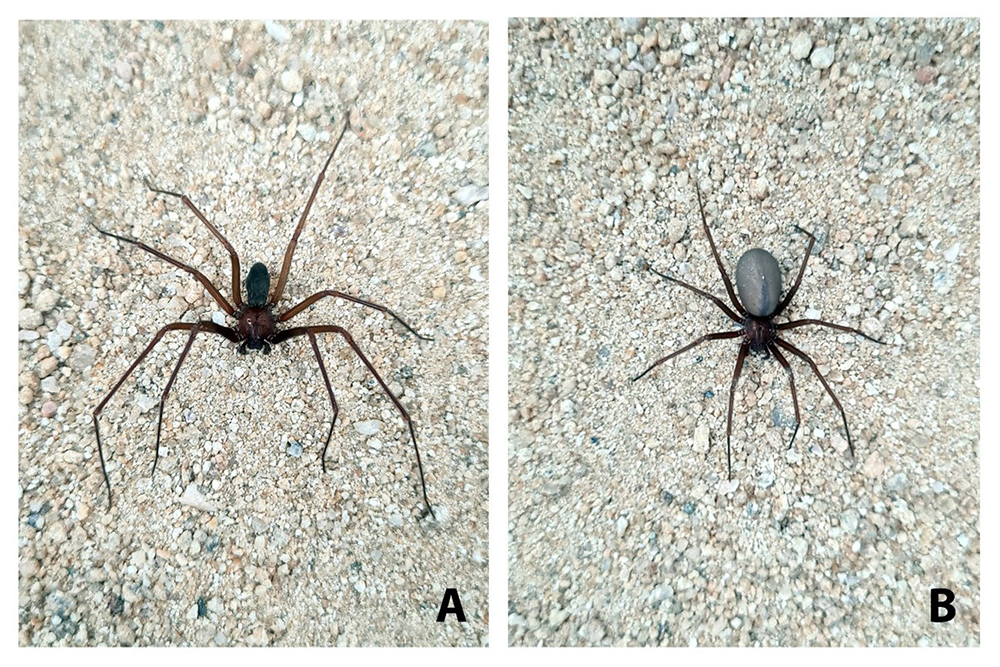Marília Martins Melo, Veterinary Toxicology Laboratory, Department of Veterinary Clinic and Surgery, Veterinary College, Federal University of Minas Gerais (UFMG), Belo Horizonte, Minas Gerais, Brazil.
Ana Flávia Machado Botelho, Veterinary Toxicology Laboratory, Veterinary Hospital, Veterinary and Animal Science School, Federal University of Goiás (UFG), Goiânia, Goiás, Brazil.
Brown spiders (Loxosceles) have a special venom that causes systemic effects and severe dermonecrosis [1]. Antivenom is available at a restricted number of public hospitals, directed only for human use. It is recommended when there are important systemic or local signs of envenomation, although it does not significantly affect the progression of the cutaneous involvement [2].
The article Protective effects of mesenchymal stromal cell-derived secretome on dermonecrosis induced in rabbits by Loxosceles intermedia spider venom, published in the Journal of Venomous Animals and Toxins including Tropical Diseases (vol. 30, 2024), investigates the protective effect of secretome derived from mesenchymal stromal cells on dermonecrosis induced by Loxosceles intermedia spider venom in rabbits.
Figure 1. Live specimens of Loxosceles intermedia spiders from Ezequiel Dias Foundation (FUNED), Belo Horizonte, MG, Brazil. (A) Male and (B) female spiders. Photographs by Clara Guerra Duarte.
Using a control group and different administration routes, we evaluated the longitudinal effect of intradermal venom injection on rabbits’ skin. Dermonecrosis occurred after 72 hours of venom injection, and treated groups presented less severe local effects over 15 days than the control group. Although all cases had persistent edema, rabbits treated with intravenous secretome exhibited noticeably milder swelling.
This pioneering study explores the application of stem cell-derived secretome for treating dermonecrotic lesions. Further investigation into the optimal dosage and timing of secretome administration is essential for improving treatment outcomes in Loxosceles intermedia envenomation.
References
1. MARTINS, G.C., et al. Evaluation of mesenchymal cells and dapsone for the treatment of dermonecrotic wounds caused by Loxosceles laeta venom in rabbits. Ciênc Anim Bras [online]. 2022, vol. 23, e-72573E [viewed 24 September 2024]. https://doi.org/10.1590/1809-6891v23e-72573E. Available from: https://www.scielo.br/j/cab/a/tykTL9ZPrcQMgZgtpKWtjMm/
2. RIBEIRO, M.F., et al. Effects of copaiba oil on dermonecrosis induced by Loxosceles intermedia venom. J Venom Anim Toxins incl Trop Dis [online]. 2019, vol. 25, e149318 [viewed 24 September 2024]. https://doi.org/10.1590/1678-9199-JVATITD-1493-18. Available from: https://www.scielo.br/j/jvatitd/a/DcP568HnspvcMwVPDPDBKPj/
To read the article, access
RODRIGUES, G.M., et al. Protective effects of mesenchymal stromal cell-derived secretome on dermonecrosis induced in rabbits by Loxosceles intermedia spider venom. J Venom Anim Toxins Incl Trop Dis [online]. 2024, vol. 30, e20240004 [viewed 24 September 2024]. https://doi.org/10.1590/1678-9199-JVATITD-2024-0004. Available from: https://doi.org/10.1590/1678-9199-JVATITD-2024-0004
External links
Journal of Venomous Animals and Toxins including Tropical Diseases – SciELO: http://www.scielo.br/jvatitd
Journal of Venomous Animals and Toxins including Tropical Diseases http://www.jvat.org/
Journal of Venomous Animals and Toxins including Tropical Diseases – Social Media: Twitter | Facebook
Como citar este post [ISO 690/2010]:
















Recent Comments